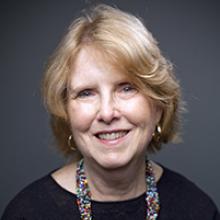What About ‘The Fifth’ Who Won’t Graduate from High School?
This year, for the first time in the U.S., high school graduation rates may top 80 percent—good news, right? But another change in 2014 could pose employment and mobility obstacles for the other 20 percent.
Starting in January, the General Education Development test (or GED) that diploma-less adults take to show that they have high-school level skills got a lot harder. Doing well on the new test should make it easier to get into college or land a job, but doing well now requires a new level of help that too few studying for the GED can get.
The old test was a pencil and paper affair that took eight hours. The new one, the first update in more than a decade, streams in online and takes a couple of hours less. The old GED had familiar item types, like multiple choice and essays. The new one has new names: hot spot (graphic images with virtual “sensors” to plot coordinates or create models), drop-and-drag, short and long writing tasks, and cloze items (fill in the missing word). Like the old one, the new GED assesses test-takers’ content knowledge but it also emphasizes their ability to reason in mathematics and language arts and to analyze and write about primary and secondary documents in social studies. The new one is aligned with Common Core State Standards that most states are adopting. It also costs about twice as much ($120) as the old one.
Better computer skills and greater analytical rigor fit with demands of the 21st century workplace, so the GED overhaul makes sense. The trouble is, many adults juggling family and other responsibilities while studying for this game-changing exam still read, write, and calculate at elementary-school levels. Quite a few of these multitaskers are also battling undiagnosed learning disabilities.
Shortages of teachers and adult-learning centers compound this challenge. In 2013, for example, Washington, D.C., had 60,000 adults who never finished high school but only 8,000 slots for adult learners.
Adults on the GED path need respect for the at-times superhuman effort it can take to pick up where they left off years ago, especially amid rapid technology change in the classroom and workplace. And research shows that to succeed they need systematic, intensive, and sustained instruction by teachers with adult-learning expertise.
Funding for these essentials pales beside adult learners’ needs. Together, local and federal funding per adult learner typically totals $1,000 or less per year for nonprofit programs. Compare that with $6,000 to $10,000 per year per traditional-aged student in many school districts.
Adult charter schools offer one promising way to help more adult learners. Some of the 11 adult charter schools in Washington, DC, combine English language instruction with GED content. Two have child-development centers attached, so adult learners have close-by daycare and those aspiring to childcare careers can get some experience under their belts. In a few others, like Indianapolis and Austin, adult charter schools link to local career-training programs and colleges.
Adult learners in programs like these get the “wraparound” social support needed to cope while studying for what for many will be a grueling test and then succeeding in post-secondary education or decent jobs. That might mean help finding a new apartment or locating a low-cost eye doctor to correct vision problems.
Maybe climbing graduation rates will mean we can stretch adult-learning resources farther among fewer Americans. Meanwhile, the one in five for whom the GED is a second chance deserve more support and more respect for the energy and determination their hard climb toward literacy, numeracy, and computer mastery demand.
Terry Salinger is a literacy expert and Institute Fellow at the American Institutes for Research. She also spent a decade teaching in public schools in New York.
